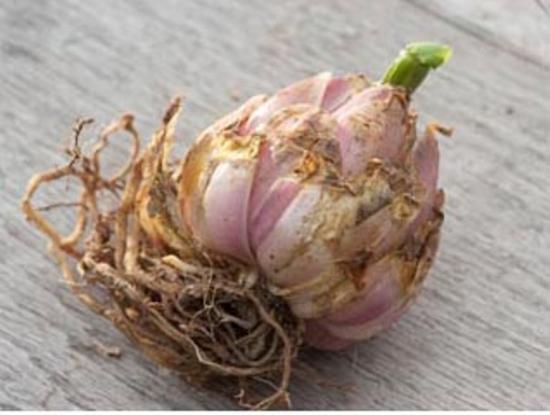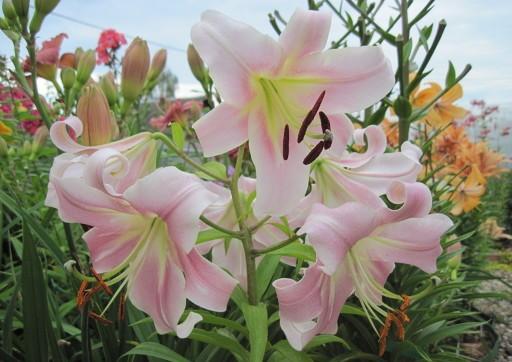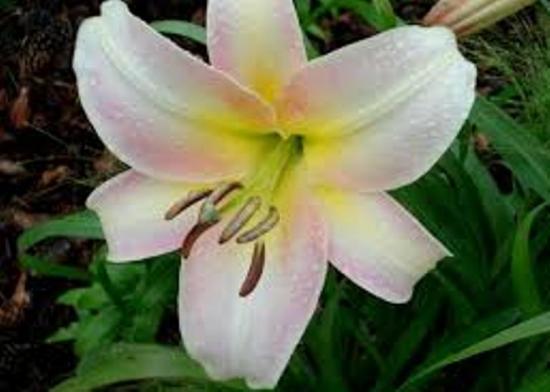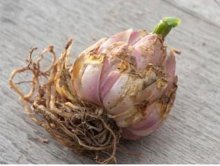Lily Urandi, advantages of tall lilies FROM hybrids, care features

Lilies have long become a habitual inhabitant of many flower beds. Currently, there are a large number of different varieties that differ both in size and color. We invite you to get acquainted with one of the brightest representatives of this species - the Urandi lily.
Content:
- What are Lilies OT hybrids
- What are the advantages of tall lilies
- How to plant lily bulbs correctly
- Lily Urandi and features of its cultivation
What are Lilies OT hybrids
OT hybrids (Orienpets) are modern hybrid varieties obtained as a result of crossing tubular and oriental varieties.
Differ from other relatives:
- Tall stems;
- A variety of colors: yellow, orange, red, white;
- Pronounced pleasant aroma;
- Blooming for two months: from the end of June to the end of August;
- Large flowers, which are up to 25 cm in diameter, can be directed either downwards, sideways or upwards. The petals are slightly wavy with curled tips;
- Ideal for growing in open ground.

OT hybrid lilies are distinguished not only by their abundant flowering, but also by their pleasant aroma. After cutting, it retains its fresh appearance for a long time, does not wither or crumble.
What are the advantages of tall lilies
Increasingly, experienced and novice gardeners prefer high varieties.

In addition to personal preferences, this choice is influenced by the following indicators:
- Plants are characterized by a strong trunk with strong shoots, which makes it possible to protect the flower from accidental damage;
- Characteristic of plants frost resistance, tolerate temperature drops down to - 35 C;
- High level of resistance to a variety of pathogens and parasites;
- Long-term preservation of freshness after cutting;
- A long flowering period that lasts for several months.
Together, all these indicators produce a plant that is remarkable for any gardener. Unpretentious, durable and beautiful, it will decorate any garden.
How to plant lily bulbs correctly
Before you start planting a flower, it is recommended that you familiarize yourself with the general rules planting bulbs. The optimal time for planting is considered to be spring and autumn; some gardeners plant even in summer.
An advantageous feature of spring planting is the fact that the bulb immediately takes root. This significantly increases the survival rate of flowers and reduces the likelihood of bulbs freezing.
Spring planting in open ground is especially important for late flowering plants. lilies, especially oriental hybrids. Closer to mid-spring, it is recommended to plant varieties that bloom in autumn.

For other varieties, planting at the end of April will be suitable. It is recommended to additionally protect the bulbs from a possible drop in temperature with a layer of dry straw or grass.
One of the positive aspects of planting lilies in autumn is the fact that the bulbs have time to develop a root system before the onset of the first frost.
This helps the plant to calmly endure winter frosts and spring temperature fluctuations. Planting should be done in September.
When choosing a place for planting, it is recommended to take into account that plants feel most comfortable in sunny areas. In this case, the place should be protected from the wind, with loose fertile soil and good water permeability.
In addition, it is important to remember that different varieties have different attitudes towards acid-base balance, so tubular varieties prefer alkaline soil.
Two to three weeks before planting, you should dig up the area and sprinkle the soil with ash, add humus and peat. It is recommended to apply a small amount of mineral fertilizer. After this, it is recommended to level and moisten the area.
Lily Urandi and features of its cultivation
It is important to remember some growing features Lilies Urandi.

So, it is worth considering that:
- In regions with cold climates, it is recommended to protect the bulbs for the winter. Despite the fact that OT hybrids are winter-hardy, it is better to mulch the soil in winter with a layer of pine needles or dry leaves;
- Application mineral fertilizers It is recommended to divide it into three times throughout the growing season. In this case, it is better to produce the first in early March;
- It is better to apply organic fertilizers in small doses in the spring. Too much fertilizer stimulates the growth of stems and flowers, but the bulbs lose their ability to develop normally. This is dangerous because in winter they can get sick or die;
- The flowers and the upper part of the plant need sun, so the flower should be planted in a sunny area. However, the roots and basal part should be shaded;
- Every autumn it is recommended to cut the flower stems at the root;
- Don't forget about feeding. OT hybrids require regular application compost and diluted in water chicken manure. It is important to remember that the use of fresh manure is strictly prohibited;
- The optimal soil for planting and growing plants is loose, permeable and fertile soil. If the substrate is heavy, it is recommended to add a small amount of sand immediately before planting.

If you follow all the rules of planting and care, the plants will soon delight their owners with long-term and lush flowering.
Lily Urandi belongs to the OT hybrids, which compare favorably with other varieties in terms of endurance and frost resistance.
Unpretentious and strong, they are quickly accepted and, with proper care, easily tolerate significant temperature fluctuations.
Let's watch an interesting video about tall lilies:













